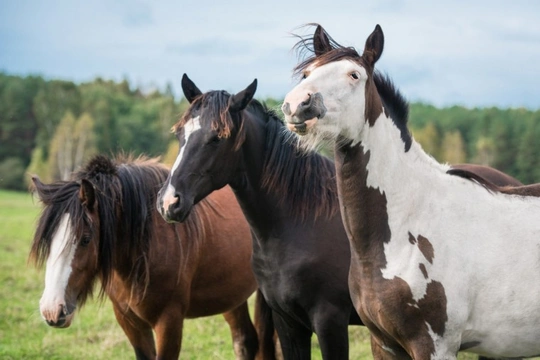
It’s just a question of colour
Coloured horses have never been more fashionable and the appetite for these horses whatever shape or size they are just does not seem to diminish. A few decades ago, it would have been unthinkable to see skewbalds and piebalds in the show ring but now there are classes for them at all levels including county.
Coloured horses come in all shapes and sizes. If you are interested in showing and performance classes, then there are two societies you could join. The first is BSPA – the British Skewbald and Piebald Association – and the second is CHAPS – the Coloured Horse and Pony Society. Both societies run in-hand and ridden showing classes from local show level all the way up to prestigious championships. They have their own championships but also have finals at top shows like the Horse of the Year Show and the Royal International. Qualification for these is very hotly contested and many top show yards now also have coloured horses in their stables.
The Traditional Gypsy Cob
Coloured horses had been around for several years in the show ring when along came another society, the Traditional Gypsy Cob Association or TGCA. This developed out of the number of coloured horses forward for classes of this type and also the desire to formalise the largely unregulated breeding of this type of coloured horse and pony. ‘Traditionals’ as they are called are shown with long flowing manes and tails and full feather on the legs so you do need to be a keen groom if this is your goal. A good traditional will change hands for a lot of money.
What other types of coloured horse will you see in the show ring?
Sports horses so part Thoroughbreds are incredibly popular - if you take a look around the lorry park at the Grass Roots level of eventing so, under BE100, you will see numerous skewbalds and piebalds. These horses are shown plaited. With a cob type horse or pony, you have the option to go traditional or hogged so no mane or no feather. Ponies are also included and there are some very smart coloured sports ponies around competing multi-discipline.
Where are you not likely to see a coloured horse?
You are very unlikely to see a coloured horse on the race track and so there are no horses of colour which filter through to series like Racehorse to Riding Horse. You also won’t see many coloured native ponies amongst most of the nine British breeds other than the occasional Shetland. Purists will tell you that a Shetland pony really needs to be black and if it isn’t then grey or chestnut are the second choice colours. A coloured Shetland will, therefore, need to be a very good example of the breed but they are still pretty marmite; some judges will favour them and others will not because of the colour.
The Welsh breeds are known for having a lot of colour, usually a white blaze and four white sock or stockings. Some Welsh carry the sabino gene which will also provide white splashes on the main part of the body. This qualifies the pony for certainly BSPA registration following their definition of what constitutes ‘colour’ and this, in turn, is borrowed from the RCVS – Royal College of Veterinary Surgeons. The definition reads as a solid patch of white with a defining line between the white and the base colour. Some Welsh ponies do therefore also qualified as coloured and can join these societies who overstamp their WPCS passport.
Welsh native pony judges tend to dislike white on the body if it is very visible – sometimes it is tucked away underneath the horse’s abdomen. There are also Welsh particularly some of the chestnut roans who have a sort of frothing effect down the sides of their bodies, like the white froth on top of coffee. These probably wouldn’t qualify to register as coloureds but either society is willing to consider clear photos of the pony from both sides and will make an assessment based on those images.
What is a Blagdon?
The term ‘Blagdon’ is open to some degree of interpretation and usually refers to type and colour so commonly solid colours with the white splashing underneath and along the body. Blagdons are usually cobs or cob type. Purists will maintain that the Blagdon must be blue and white and certainly this roan effect is the premium colour. A horse with these markings will carry the sabino gene and is likely to be of Welsh descent.
The Gypsy Vanner Horse Society
Just to throw some more confusion into the mix, there is a fourth relevant society called The Gypsy Vanner Horse Society to recognise the breeding and heritage of gypsies in England Ireland who developed a type of horse called a vanner. The vanner was designed to pull gypsy wagons and light trade vehicles and is where we derive our word, ‘van’ from. Many of these horses are coloured.
The societies that represent coloured horses and ponies in the UK all offer something slightly different and distinct but do certainly overlap. It is down to individual preference as to which one to register a horse with but some people are registered with more than one. Coloured sports horses and native ponies may also have registration and passports from their own breed societies as well but passports can be recognised and overstamped by a second or several other bodies or groups like CHAPS or the BSPA.
The world of colour just doesn’t seem to stop expanding and the appetite for coloured equines shows no sign of diminishing any time soon.



